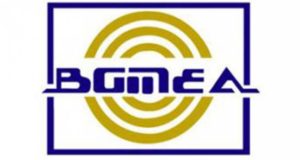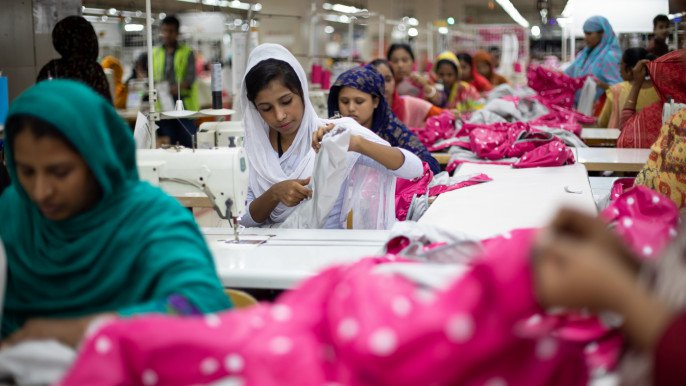Published in The Daily Star on November 7, 2017

Photo: The Daily Star
One does not give much thought to the export market for home textiles and terry towels in this country. Yet this USD-1.2-billion-a-year export subsector in the readymade garments (RMG) industry occupies a special place in the garments sector of Bangladesh as raw material used in the making of products is local yarn made from cotton waste. Currently, it has some 110 factories (about 97 in operation) employing some 65,000 workers. Unfortunately for the Bangladesh Terry Towel and Linen Manufacturers and Exporters Association (BTTLMEA), the industry has been in a state of decline since 2011 for a multitude of reasons, with the bulk of cotton waste being exported or smuggled out to India/China under the guise of waste clipping/garment clipping.
Going by a report published in a leading English daily, on October 23, industry insiders have alleged that certain parties are exporting cotton waste to other countries misrepresenting it as garment “jhute” (cutting waste) since there is no export duty on garment waste. The managing director of Towel Tex Limited was quoted as saying that “despite offering high prices, we are not getting the required raw materials.” We find that the export of cotton waste, nes (H.S. Code 5202.99.10) has jumped from USD 1,059,777 in 2013-2014 to USD 4,468,830 in 2016-2017, and hence the raw material crunch.
Other materials used as raw materials for the industry include used or new rags of textile materials – white and sorted (H.S. Code 631010) witnessed a rise in “export” from USD 8,946,803 in fiscal year 2013-2014 to USD 10,374,017 in 2016-2017. The coloured version of this material (H.S. Code 631090) posted an increase by about a third (USD 3,085,9324 to USD 4,197,0444) over the same period.
The government set the minimum export price for cotton waste at USD 4.50 per kg (25 percent export duty applicable). Since there is misrepresentation of these waste materials, it allows for them to be smuggled or exported as garment clipping. In effect, the export duty is bypassed depriving both the industry/local spinners of its raw material and the government of duty earnings. The shortage of both cotton waste and garment “jhute” is hampering the production of local yarn, without which we may well be sealing the fate of the home textile and terry towel sector. So, what is to be done? The industry, for one, has highlighted the problem in a letter to the National Board of Revenue (NBR) on October 11 that unless steps are taken by NBR to halt the export of cotton waste/garment jhute/cotton clipping, the industry faces closure in the foreseeable future.
When we look up EPB data at the usage pattern for cotton waste (H.S. Code 5202.99.10) in other countries, we find that during fiscal year 2016-2017, the total value of export stands at USD 4,468,830 with Hong Kong, India and Nepal topping the list having consumed USD 377,646, USD 2,984,953, USD 906,796 respectively. These three countries constituted nearly 96 percent of total export value for this raw material. For used or new rags of textile materials (not sorted), China and India are nearly at par with the former importing USD 14,770,106 (35 percent of total export) and the latter importing USD 15,257,740 (36 percent of total export). The 2014-2015 data show that India’s consumption has remained largely stagnant while China has recorded nearly a 32 percent rise in consumption of this raw material in the current fiscal year.
We can go on listing the rest of the raw material categories but there is hardly any need for that. According to industry sources, the price of yarn produced by these waste materials has increased by 20 percent over the last few years, largely due to chronic shortage of waste necessary for making yarn used by the industry to make finished products. There is a need for NBR intervention here because it is being deprived of revenue and the halting of such illicit activity could stall the decline of the industry in question. Though the sector employs 65,000 people, which pales in the shadow of the nearly 4 million people employed in the RMG sector, those workers support their families and their livelihoods are called into question every time a factory is shut because we have failed to protect a fledgling domestic industry.
An industry generating USD 1.2 billion in exports despite facing such an uphill struggle deserves more attention at policy level. What could be the potential earning if the subsector was 200-factory strong, employing so many more thousands of people? And protecting the raw material base for the home textile and towel industry has other benefits.
Rotor spinning mills in the country use cotton waste to produce the yarn; similarly, modern recycling mills utilise the “jhute” waste from RMGs to make another type of yarn—and both these yarns allow for making terry towels, home textiles, denim and other types of clothing that end up in foreign markets earning the country precious foreign exchange. So, when we take into account the combined workforce of all these different factories, the number is no longer 65,000—it is much higher. The NBR should seriously take a look at the proposal for putting into place barriers to export (for a year) of such raw material that is now taking place by misquoting them as something else. If after a year there is no improvement in the industry, the NBR is perfectly at liberty to change its decision regarding export of the items in question.
 CPD RMG Study Stitching a better future for Bangladesh
CPD RMG Study Stitching a better future for Bangladesh



